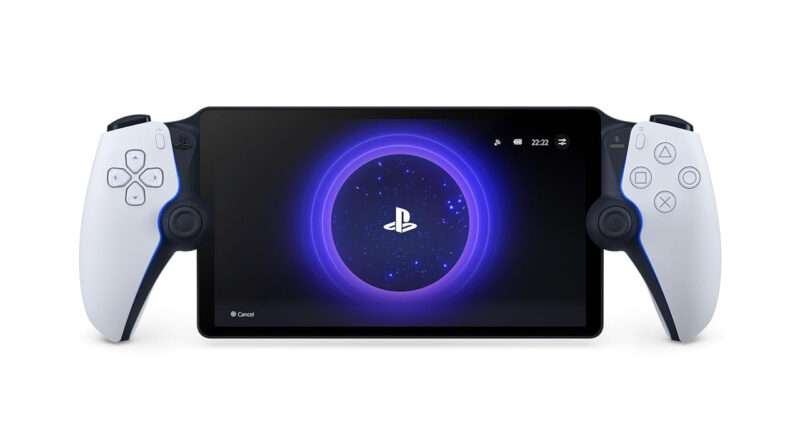PlayStation Portal Review: Worth the Hype or Just Hype?
|
Getting your Trinity Audio player ready...
|
Released with limited fanfare, Sony’s PlayStation Portal has quietly captivated the market. Despite sparse marketing efforts, the device has become a surprising success, selling rapidly and sparking curiosity about what it truly offers. For gaming enthusiasts and those following Sony’s handheld console journey, the question remains: is it worth the hype? Below, we’ll explore the features, strengths, and drawbacks of the PlayStation Portal, especially in light of other handheld consoles in the market.
Introduction: Sony’s Handheld Legacy
The Origins – PlayStation Portable and Vita
Sony’s PlayStation Portable (PSP), launched in 2005, was a groundbreaking device, offering console-level graphics in a portable format. Celebrated for its game library and flexibility, it built a loyal fanbase despite some limitations. Fast forward to the release of the PlayStation Vita—Sony’s successor to the PSP. Though beloved, the Vita struggled to maintain a foothold in the rapidly evolving handheld gaming market, largely due to a lack of strong support and high-quality game releases. Sony’s venture into handheld gaming seemed to be on pause…until now.
The Rise of Remote Gaming Devices
The dream of bringing console-quality gaming to handheld devices has since been realized with devices like the Steam Deck and ROG Ally, both delivering impressive on-the-go performance for PC and console games. The PlayStation Portal, however, takes a different approach, designed exclusively for remote play rather than fully independent gaming.
PlayStation Portal: The Essentials
Priced at $199, the PlayStation Portal stands as a dedicated remote-play device that allows users to access their PlayStation 5 games remotely on a handheld console. While this may sound intriguing, the device comes with certain limitations, which we’ll explore in depth.
Key Features of the PlayStation Portal
Design and Display
The PlayStation Portal design resembles a PS5 DualSense controller split in half, with an 8-inch touch screen embedded between the halves. The screen offers 1080p resolution with a refresh rate of up to 60 frames per second, making it quite a visually pleasing experience.
Impressive Build Quality with Some Drawbacks
The Portal includes most of the DualSense controller features that fans love, such as adaptive triggers and haptic feedback. However, it lacks a few key components like the touchpad and speaker. Although the absence of a speaker is not a significant issue, the missing touchpad can cause problems, particularly with older PS1 and PS2-emulated games that rely on this feature.
Touchscreen Replacements for Touchpad Functions
Sony replaced the touchpad with a touchscreen-based interface. Tapping the screen brings up two transparent squares that act as left and right touchpads. While promising in theory, these virtual touchpads can be unreliable. For example, in classic PS1 and PS2 games, they sometimes fail to work as intended, limiting access to essential in-game menus.
PlayStation Portal: The Limitations
Limited to Local Wi-Fi for Remote Play
One of the biggest restrictions is that the PlayStation Portal works only over a local Wi-Fi connection. Unlike other handhelds that allow you to take your games anywhere, the Portal requires you to be connected to the same Wi-Fi as your PS5. This means that users cannot truly experience portability, making the device less appealing for those seeking a fully mobile gaming experience.
Dependence on High-Speed Internet
Internet speed is a crucial factor for the PlayStation Portal’s performance. Inconsistent or slow internet connections can result in laggy and pixelated gameplay, leading to a less enjoyable experience. Users with high-speed, fiber-optic connections tend to experience smoother gameplay, while those with slower connections may struggle.
Streaming Performance: What to Expect
Testing the PlayStation Library
For this review, we tested a range of PS5 games, from Ghost of Tsushima and Demon’s Souls to Astro Bot and Spider-Man: Miles Morales. Each game streamed differently, with graphically intensive games often struggling to maintain a steady performance. Lighter games, such as older PS4 titles, ran more consistently but still suffered from occasional lag and pixelation.
Challenges with Higher-Intensity Games
Titles that demand higher graphic fidelity, such as Returnal and Spider-Man: Miles Morales, encountered more severe streaming issues. These problems often escalated from mild pixelation to complete disconnects. This inconsistency makes the Portal less reliable for users who prioritize seamless gameplay.
Compatibility and Content Restrictions
Limited Support for Streaming Services
A significant disappointment with the PlayStation Portal is its incompatibility with streaming services. Users expecting to enjoy Netflix or YouTube on the device will find these features unavailable. Additionally, PlayStation Plus games that are cloud-streamed cannot be played on the Portal, a restriction that reduces its overall content library.
Conclusion: A Novel Device for Selective Gamers
The PlayStation Portal is an innovative step into the world of remote play, showcasing Sony’s commitment to delivering unique gaming experiences. However, for the broader gaming community, it falls short of the versatility and portability offered by other handheld devices in the market.




